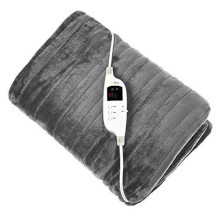Feather duvet purchasing advice: how to choose the right product
- What you need to know
- Down duvets are filled with bird feathers, which makes them especially soft.
- They are very breathable, so they keep you warm when it is cold whilst cooling you down at higher temperatures.
- They are categorised in different warmth classes depending on whether they are designed for summer, winter or all year round.
- There are special down duvets for people with dust allergies or asthma.
Down duvets: always sleep right
Although most people are familiar with down duvets, not everyone can describe what makes them special. In fact, what exactly is down? How does it differ from ordinary feathers? In a nutshell, down refers to feathers with a particularly short quill — or even none at all. This is because down feathers are the undercoat of many birds, which means that they lie close to the animal’s body. Instead of having a long quill shaft, they have elongated, soft feather branches. They look less like what you would classically think of when imagining a feather, and more like a snowflake-shaped cotton ball.
Why are down duvets so special?
The fine branches you get on down feathers produce a compact shape, so that when piled up they serve as an air cushion between the individual feathers. These air cushions in turn create a heat-insulating effect — for birds as well as duvets! Down is also breathable, which keeps you warm when it is cold and cool when it is hot. They therefore even out temperatures, which is why they are the ideal filling material for both winter and summer duvets.
History lesson
Humans have been using down-filled quilts since Roman times. Historical sources note that the Roman Emperor Elagabal, who ruled from 218 to 222, had pillows filled with down taken from partridges. Today, however, down from partridges and chickens is hardly ever used.
Nowadays, down duvets are typically filled with goose or duck down. While most models use basic down from ordinary ducks, some models contain fine down such as that of the Icelandic eider, a special duck species. So, depending on the type of duvet and your price range, you can choose from different downs for your duvet.
Why choose a down duvet rather than a feather duvet?
Feather duvets require a thicker cover material than down duvets. The pointed, long quills of large feathers quickly pierce thinner covers and can damage them. The thicker material around feather duvets makes feather duvets heavier, less breathable and therefore not as comfortable.
While feather duvets are more something for the winter, down duvets can be used all year round, depending on the fill density. Since they can be used in all seasons, they are usually somewhat more expensive than feather duvets. Some manufacturers help keep costs down by adding a small proportion of feathers to the down as filling material.
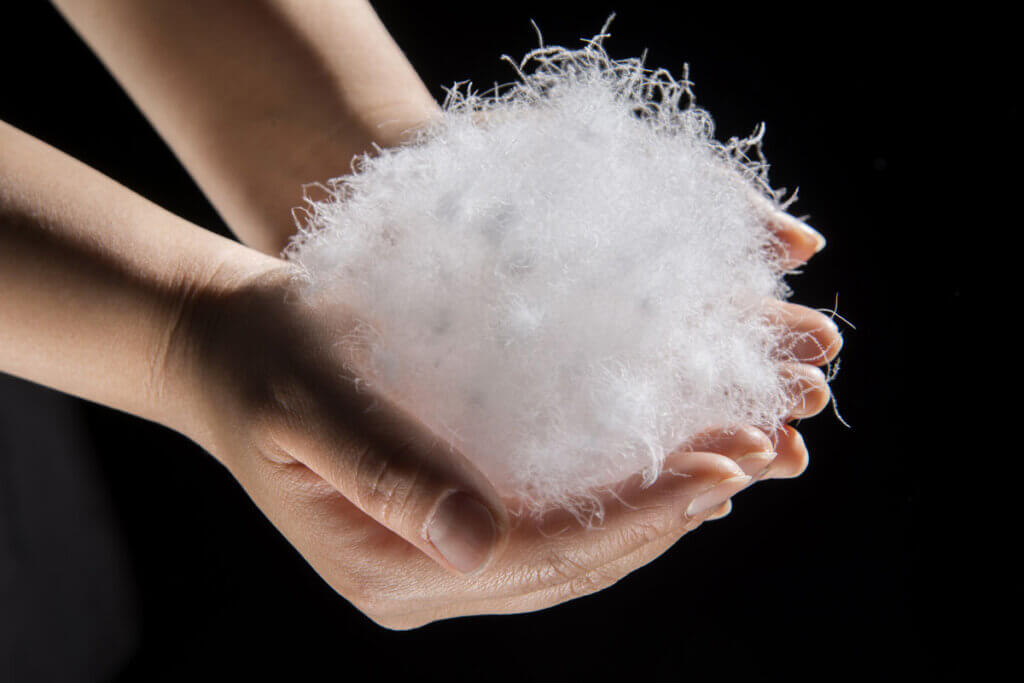
However, once the proportion of larger feathers exceeds 40%, you begin to lose a lot of the positive effects of down. If you buy a duvet filled with 90% feathers and 10% down — despite the product name — you’re not sleeping in a down duvet, but a feather duvet; often with all the disadvantages mentioned above.
The advantages of down duvets cannot be ignored: high breathability and low weight make for a much more comfortable sleep. You’ll sweat less and won’t feel constricted by a blanket that is too heavy. Extra warmth during sleep also helps with rheumatic complaints. An investment in a high-quality down duvet therefore often also means an investment in a more peaceful night’s sleep.
Down for summer and winter
Down duvets are categorized into different warmth classes or warmth grades to help you buy the right duvet for your purposes. As a general rule, there are five down duvet warmth types:
- Warmth level 1: summer room temperatures of over 77 °F (25 °C).
- Warmth level 2: room temperatures of around 68 to 77 °F (20-25 °C).
- Warmth level 3: room temperatures of about 59 to 68 °F (15-20 °C).
- Warmth level 4: winter room temperatures below 59 °F (15 °C).
- Warmth level 5: special warmth level for people who get cold easily at winter room temperatures.
Warmth grades are designed so you get the perfect fit whatever your needs. For example, smaller and lighter people will do well to go for a higher warmth level as they get colder quicker. As you might expect, higher warmth duvets are better for winter and lower ones for summer. Blankets with warmth levels 2 and 3 make the most sense as transitional blankets. This said, the best choice always depends on your room temperature. If you heat your home a lot, a thinner blanket will be sufficient even in winter months. For colder rooms, on the other hand, thicker blankets are suitable in spring and even summer.
How are down duvets made?
Summer down duvets, designed for room temperatures of about 70 °F (22 °C) and above, usually aren’t made using a boxed all construction, i.e. individual pockets filled with down. Duvets of all other warmth levels, on the other hand, have these compartments. They are designed to prevent the uneven distribution of the down and serve as a height separation between the top and bottom of the blanket. Otherwise, the filling material would collect in the lower part of the blanket over time.
The higher the quality of the down used to make a duvet, the less is needed to keep you warm. Therefore, high-quality down with a high thermal effect has a low blanket weight. This property is called fill power. It indicates how much the insulation material, in this case the down, straightens up after being compressed for 24 hours. Fill power is given in cubic inches (unit of measurement: cuin).
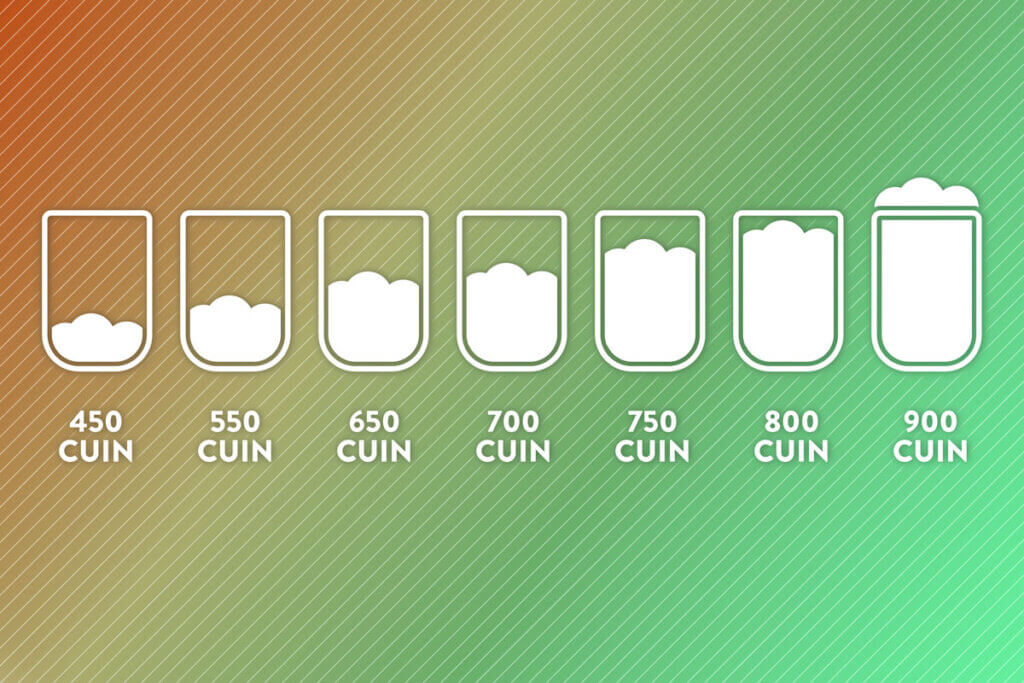
It’s better to have several down duvets than just one.
The pockets that make up a particularly warm winter down duvet of class 4 or 5 are usually around 3 inches (8cm). By contrast, the typical pocket thickness of a medium-class down duvet is only around 1 inch (2.5cm). Thanks to different duvet warmth levels, there are enough gradations to find the right model for you. This might be a year-round model with a certain filling or different duvets for winter, summer and even spring/autumn. If you have several duvets, they will end up lasting longer than one single blanket. The down quality and thus the ability to insulate deteriorate over the years.
Size, quality, and sustainability
Down duvets come in different sizes. While you might be used to standard sizes like single and double, watch out when buying online as these standards differ from country to country. The safest way to make sure you’re getting the right size is by checking the measurements.
You should definitely pay attention to what material the cover of your down duvet is made of. Although most covers are made of cotton nowadays, there are differences in quality. For example, sustainable organic cotton is usually of a higher quality. Spending as much as you can afford is worth it when it comes to bedding – if cared for properly, you can use your down duvets for 20 to 30 years. Most manufacturers of high-quality down duvets offer a guarantee of at least 10 years.
In Europe, many established manufacturers only carry OEKO-TEX-tested duvets in their range. Independent institutes test textiles of all kinds according to this standard, which has a total of around 100 different test parameters and is also known as OEKO-TEX Standard 100. After passing the tests, a corresponding seal certifies there are no harmful substances—for example, banned azo dyes—in the blankets. Thanks to regular company visits by inspectors, manufacturers must also continue adhering to the OEKO-TEX standards to keep their certificate.
How do I clean a down duvet?
Down duvets are only good for your health and general well-being if you clean them regularly and properly. Most down duvets can be washed at 86 to 140 °F (30-60 °C). Depending on the model, you can sometimes even add the duvet to your normal colored or white laundry. However, most down duvets can only tolerate a small amount of detergent, which is why it’s best to wash them alone or together with other bed linen. Alternatively, say if your washing machine is not big enough, you can leave your duvet in the hands of a professional launderette.
Do not iron, do not bleach
Be careful never to iron, bleach or dry clean your down duvet. This can destroy the filling.
Some models are tumble dryer compatible — this said, there is a risk that the down in the compartments can clump together during drying, making the duvet less soft than before. When this happens, some compartments can even empty completely, while their filling moves to other corners of the blanket. It is best to leave washed blankets in the dryer until the filling is completely dry to prevent the down from moving.
It is better for down duvets to left to air dry — but not directly in the sun, otherwise the down can become brittle. You should also shake your duvet every day. This prevents the filling from clumping together and keeps the down loose and airy. In winter, it’s advisable to occasionally place your duvet on a heater to keep it fresh and elastic. In this way, it won’t contract due to the cold and will retain its flexibility in the cold season.
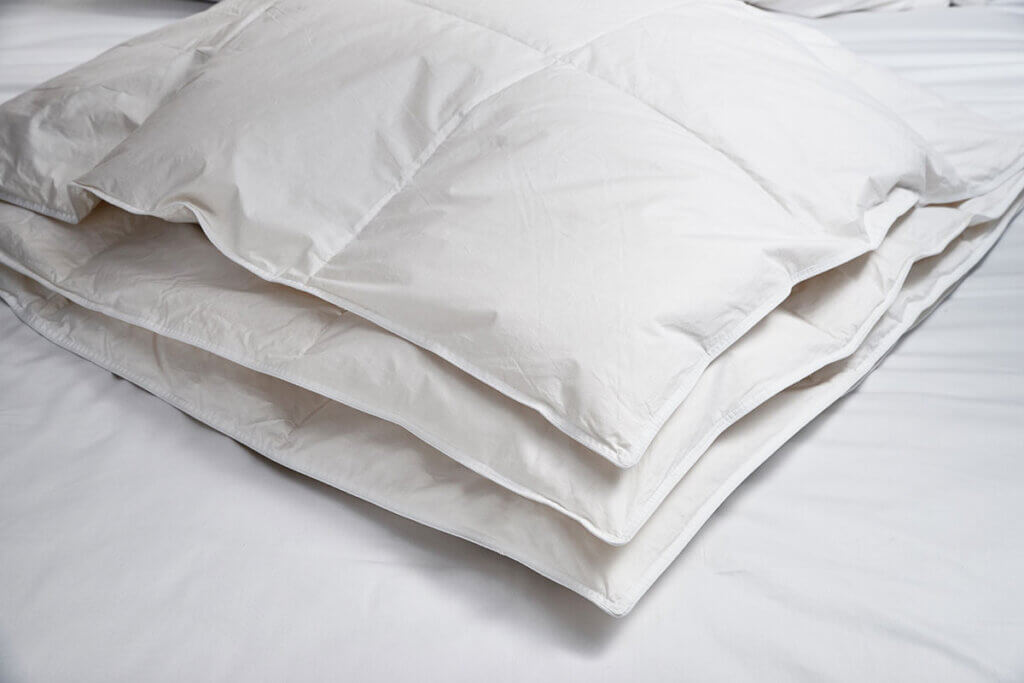
Down duvets for allergy and asthma sufferers
If you suffer from dust allergies or asthma, you can get duvets specially designed to combat dust mites. These duvets usually have a particularly fine cover on which moisture evaporates quickly, provided they are well aired. This means that dust mites have fewer opportunities to multiply. Furthermore, these special blankets are usually washable at 140 °F (60 °C), which will kill all mites. It’s a good idea to own several duvets if you suffer from allergies, so you can change them regularly.
Down pillows: be careful with the filling
Just as with duvets, if you have allergies or asthma, you’ll need a suitable pillow. In the EU, manufacturers mark these models with the NOMITE mark, a trademark of the Association of the European Bed Feather and Bedding Industry. This mark indicates whether a duvet is suitable for people with house dust allergies.
As with down duvets, there are also down pillows with different fillings, filling grades and cover materials. Here, the crucial factors are comfort and shape. Larger pillows ensure a higher head position when sleeping, while you lie flatter on smaller pillows with less filling. Higher pillows are best for those who prefer to sleep on their side. Lower pillows are better for those who sleep on their back or stomach. Down pillows usually come in square and rectangular shapes. Down pillows are lighter than their feather-filled counterparts. What’s more, they are particularly soft, breathable and more efficient at regulating moisture.
However, just as with duvets, many ‘down’ pillows aren’t only filled with down. You always need to pay attention to the proportion of feathers and down in pillows. Down pillows should be replaced after about three years. After this, the filling will have compressed too much, such that the cover loses its elasticity significantly and no longer ensures a comfortable sleep.
Image 1: © Yoshihito Kagami / stock.adobe.com | Image 2: © FinalCheck | Image 3: © dvoinik / stock.adobe.com


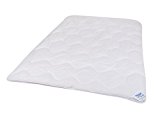
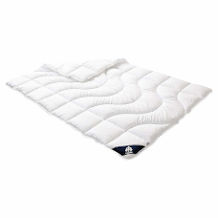
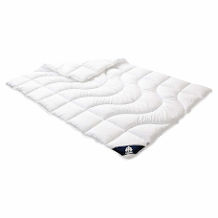
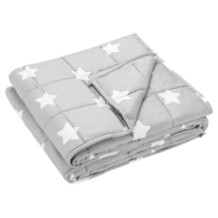
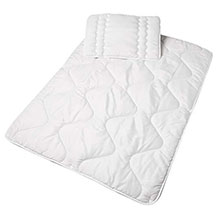
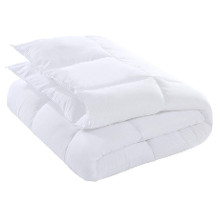
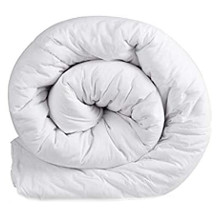
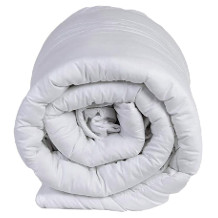
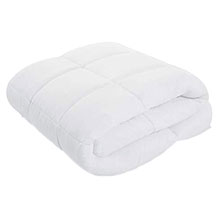

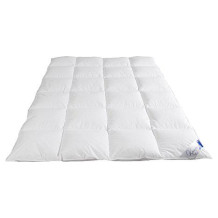
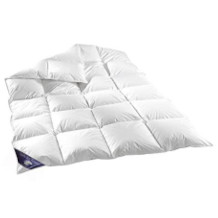
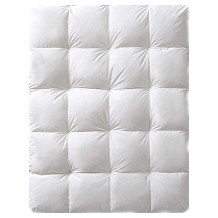

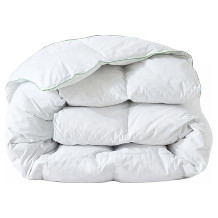
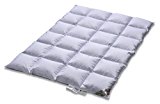
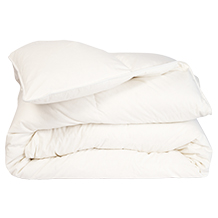
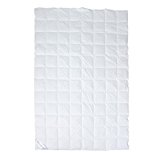
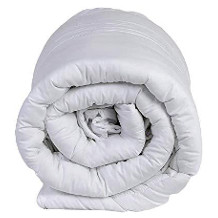

 2,114 reviews
2,114 reviews




